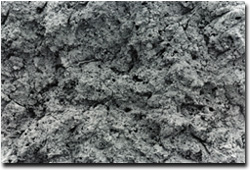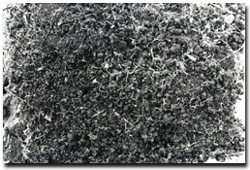Soil Coalescence
S.C. Boucher
School of Geography and Environmental Science
Monash University, Victoria 3800
This article has been reviewed by Dr. Bruce Cockcroft.
Aggregate coalescence is a form of soil hardening, the mechanisms of which, unlike hardsetting, are poorly understood. Working in the irrigated areas of the Goulburn Valley, Cockroft and Olsson (2000) found that loose, water-stable, zero-tilled soils not subject to traffic, hardened between three and six months following the preparation of soil beds for orchards and this phenomenon differed to the problems of slaking, dispersion and compaction. They noted that a process of welding at contact points between soil aggregates and fragments took place slowly in response to cycles of wetting and drying, and made the soil harder and more rigid. Coalescence can occur between different aggregates, separate fragments, as well as aggregates and fragments (B. Cockroft pers, comm.). Aggregates also became deformed and biopores (i.e. visible pores which were rounded) developed. Despite a high percentage of macropores that enhanced infiltration, drainage and some root growth, the hard soil matrix caused inhibited root growth and activity (in comparison with loose soil) and, accordingly, a reduction in crop productivity. Coalescence was not restricted to certain clay minerals or texture groups (Cockroft and Olsson, 2000). The soils that Cockroft and Olsson (2000) studied were red-brown earths (Sodosols and Chromosols) and Vertosols but it should be noted that all soils coalesce including krasnozems (Ferrosols) and chernozems (B. Cockroft pers, comm.). |  Coalesced soil from a no-till orchard exhibiting biological pores within a dense matrix. It is characterised by a moderate permeability to water but a high resistance to root elongation. Photograph: Bruce Cockcroft |
From a study of 15 sites in soil sampled from a depth ranging between 20-80 mm, Cockroft and Olsson (2000) observed that coalesced soil was apedal, firm and brittle, hard beyond the strength of fingers, and contained 15 % (in area) of biopores greater than 250 Ám. Uncoalesced soil, however, was highly pedal, loose and crumbly, barely perceptible in terms of hardness, with only 5 % of biopores present. Furthermore, bulk density and penetrometer resistance in both wet and dry soil were much higher and root concentration and total carbon were far lower in the coalesced soil than the uncoalesced material. Macropore and water-stable aggregate percentages were high in both groups. Cockcroft (pers. comm.) noted that uncoalesced soils (including virgin soils) are very rare, and that less that approximately 1 % of the world’s soils are unaffected by coalescence.
 Uncoalesced soil characterised by excellent structure that is loose, porous and permeated by roots. Photograph: Bruce Cockcroft | Grant et al. (2001) studied cultivated soils in the Goulburn Valley and found that coalescence developed at a faster rate than measured by Cockroft and Olsson (2000), although the final values were similar (over 90 % after 16 weeks and 100 % after 43 weeks respectively). The virgin soils were relatively unaffected by the process in both cases, and exhibited approximately 10 % coalescence after four months in the more recent data set as opposed to the even lower result assessed by Cockroft and Olsson (2000) after 13 months. This lack of coalescence was consistent with the common observation that the process remained negligible during the first growing season following the cultivation of virgin soils (Cockroft and Olsson, 2000; Grant et al., 2001). Different models of coalescence need to be considered, depending on the causative factors involved (Grant et al., 2001). |
In terms of management, assuming that the soils are highly water-stable and not compacted by traffic, a combination of high levels of organic matter and continuous roots, especially of grasses (with no fallow) appears promising.
References
Cockroft, B. (pers. comm.). 22 Arcadia Downs Drive, Kialla. Victoria 3631.
Cockroft, B. and Olsson, K.A., 2000: Degradation of soil structure due to coalescence of aggregates in no-till, no-traffic beds in irrigated crops. Australian Journal of Soil Research 38, 61-70.
Grant, C.D., Angers, D.A., Murray, R.S., Chantigny, M.H. and Hasanah, U., 2001: On the nature of soil aggregate coalescence in an irrigated swelling clay. Australian Journal of Soil Research 39, 565-575.


